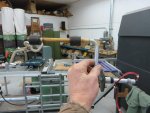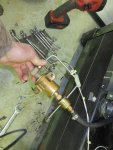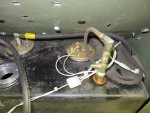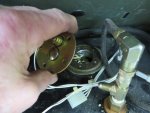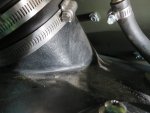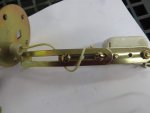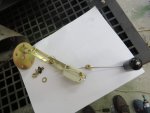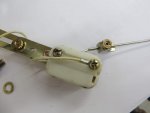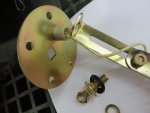One thing to keep in mind is that the military uses lots of things that need this same type float. So sometimes people get a float, unwrap it, and stick it in, without checking to see if the float is adjusted to the same length, as the old one. So they toss it in, and then it will not read, just like the old one. The TM does not tell you what the length is. It's been too long for me to remember what the length is, so unless someone has one out, and can measure, you are going to have to maybe try it once or twice.
Did you mark the float before taking it out? So you know how it was orientated? And that could also have been a problem. If it was turned in the wrong direction, the float assembly could have been hitting the back of the tank, on the slanted side.
In any case, when the tank is empty, the float should almost touch the bottom of the tank. When full, it should almost be at the top. A little room is necessary to allow for expansion. Like Mike said, the gasket is a standard SAE 5 hole. I have NEVER used silicone, or any other sealing compound on a TQG fuel tank. Just the paper gasket. You don't need it if everything is done right. All it does is screw up the gasket, so you cant use it again. The same with every other opening on the tank.
Make sure the float and float rod are tight when you replace the sending unit. I once opened up a tank to find 2 or 3 floats, complete with rods, bobbing around in the tank. One of them got tangled up with the 4th installed sending unit float, causing it not to work and making me think it needed replacing. Just because of all the junk floating around in the tank.
Did you remove the entire filler neck? Look at page 2-114, figure 2-21, Items 21-27, TM 9-6115-642-24. Did you take all that out? Just curious. Because with all that crap out, you should be able to reach inside the tank fairly far.



